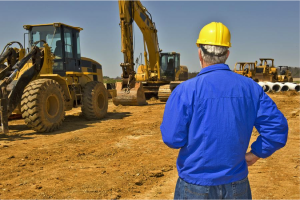
In a construction project, heavy equipment is always present. However, despite that they’re quite useful, they can also be dangerous, especially when you are not using them correctly. That’s why accidents are quite common in the construction site; oftentimes, workers get injured whenever they are using or close to bulky or heavy equipment. To prevent that from happening, follow these construction safety tips around heavy equipment.
Wear Smart PPE
At a construction site, the employees should be encouraged to wear smart PPE, such as safety glasses, gloves, vests, hard hats, and sturdy boots. Additionally, when loading and unloading the equipment at the construction site, it should be done on level ground– this would eliminate the risks of rollovers when getting the items on or off the trailer or truck.
Constant Communication Is a Must
With the advancements in technology and the help of IoT, communication has been more comfortable. For that reason, it’s imperative for project managers to ensure that there’s constant communication with the people on the job site. A two-way radio is the best form of communication, but there are other smart devices that you can also use for this purpose.
Know Your Environment
When operating heavy machinery, it’s very important to stay alert at all times and be mindful of your surroundings. Make sure that the overhead power lines are de-energized, but if it’s not possible, then create barriers to prevent making direct contact with them. For this purpose, smart traffic cones can be quite useful as it can detect unusual activities which would automatically alert those who are in charge.
In case you are digging, check if all the underground utilities, like the gas, sewer, electrical, and water have been thoroughly reviewed and adequately marked. This would assure you that there isn’t any damage that might intervene with the project.
Aside from that, workers should be prohibited from going to locations where heavy equipment are being used. Likewise, operators should know the swing radius, especially when tackling a project in cramped spaces to avoid hitting bystanders, workers, or other equipment nearby.
Check Equipment Regularly
You have to keep in mind that each machine contains thousands of moving parts or more that have to be regularly checked to ensure that it’s in excellent condition. It is essential to inspect the machinery, especially heavy equipment to avoid accidents and injuries. However, if IoT technology is already being practiced within the job site, most of this machinery are probably embedded with sensors that send signals whenever it’s not functioning correctly.
Only Use the Equipment for Its Main Purpose
Each construction equipment or machinery is made to perform specific tasks. For instance, excavators are not cranes, and wheel loaders aren’t designed to carry construction workers in the bucket and function as an aerial lift. What we are trying to say is that you should be using the right kind of equipment when performing tasks, and make sure that you are using it based on the manufacturer’s instructions. That means you shouldn’t overuse the equipment either. Pay attention to the lift capacity or payload of the equipment.
Workers Should Be Trained
Most heavy equipment isn’t that easy to operate. That’s why it’s very important that the construction workers are trained, and regularly updated about the use of construction machinery, especially the new models. Regular safety meetings, as well as up-to-date procedures, could also lessen the possibilities of accidents within the job site. It’s also necessary that the contractors have maintenance and inspection records that they have to evaluate now and then.
Pre-Planning and Safe Work Practices Should be Followed at All Times
During pre-planning, there are safety measures that should be followed to reduce the risks of injuries when working around heavy equipment, and here are some of those:
- Heavy equipment should only be used by trained professionals and spotters.
- Workers should be aware of the massive equipment safety hazards, and safety rules should be implemented within the workplace.
- A copy of/access to the operating manual for machinery should be given to the operator-in-charge.
- Limited access-zone are essential and should be set appropriately up around heavy machinery.
- A path site plan for vehicles should be developed to prevent equipment from backing up.
- A cap shield canopy should be provided for worker protection.
Leveraging Emerging Technology For Improved Safety
Construction workers deal with heavy equipment on a regular basis, and this can be pretty dangerous if they’re not entirely accustomed to using them. However, by taking some time to understand and follow some construction safety rules, staying safe is highly possible.







